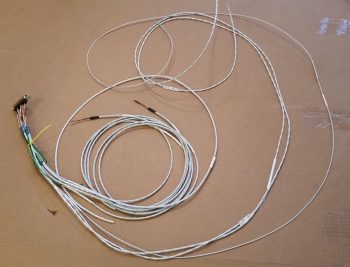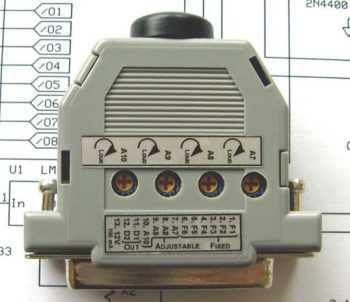Today I was still feeling pretty wiped out from my world wind trip down to North Carolina and Virginia Beach, so I took it kind of easy. As I was doing some domestic cleanup duties I ran across a book on Burt Rutan that my son gave me as a gift, so I spent a good hour or so reading that . . . a little inspiration for the build!
After reviewing a bunch of pics I took of Marco’s firewall and engine compartment, and researching a bit while looking at some other folks’ firewalls, I then reworked the component diagram I have for my firewall. May seem a bit ahead of the game, but if all goes right I will be mounting the firewall to the fuselage for good here in the next few weeks, and I wanted to figure out internal hell hole (aka “firewall forward”) cable & wiring runs, oil heat line configuration, and component placement. Obviously, figuring out a close estimate of where all my firewall transitions will be on the engine side of the firewall will drive the placement requirements on the hellhole side of the firewall.
In addition, as I install the canopy I will construct a GIB headrest assembly that will also be a compartment containing the GRT EIS4000 engine management control head and the Electroair Electronic Ignition controller as well. Having a good idea for where & how these component wires transit the firewall is a good thing.
Still in the electronics mode, and not feeling up to snuff for shop work, I worked a couple more connections on my Dynon Intercom wiring harness. Specifically, I prepped and terminated the 22AWG 2-conductor shielded cable for the Mic connection from the intercom to COM1 (GNS-480). Using the opposite end of the same 2-conductor cable, I also prepped & terminated the connection from the Intercom’s auxiliary audio input to the VX-Aviation AMX-2A 10-Channel Audio Mixer (see below). I also printed out & labeled these new Intercom wiring harness cables with heat shrink labels.
I’ve been kicking around the need for an audio mixer for a while now, but the reality of this requirement hit me as I was helping Marco with his panel upgrade on his flying Long-EZ. If there are more audio inputs coming into the Intercom from such devices that I have on hand like the Trio Autopilot, GNS-480 NAV & system audio outputs, etc. then an audio mixer is required to get them into one signal.
So, I finally made the decision to research out what I needed and make a final decision on what model would fit my requirements. The end result –which I’ve had my eye on for a while– was the VX-Aviation AMX-2A 10-Channel Audio Mixer. Apparently, Vern at VX-Avaition doesn’t sell these any more and has handed over sales control to makerplane.org, which is where the pic below is from.
As you can see, the form factor for this 10-channel audio mixer is a modified 25-pin D-Sub connector so the unit is very small and lightweight. I don’t need it just yet, but it is on my list of stuff to buy so I’ll most likely order one in the next month or few.
In addition, I finalized my decision on the AMX-2A by incorporating it into my Comms wiring diagram.
Tomorrow I plan on getting back into the shop and turning & burning to get the cockpit stuff knocked out to get on with finalizing the nose build and getting the canopy installed.


